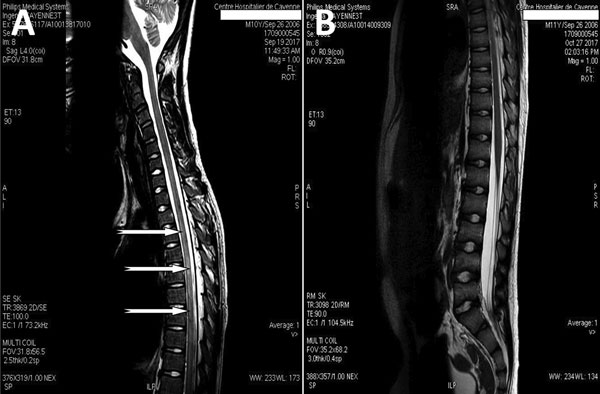Volume 24, Number 6—June 2018
Research Letter
Angiostrongylus cantonensis Infection of Central Nervous System, Guiana Shield
Figure

Figure. Magnetic resonance imaging (MRI) of the spine in a 10-year-old boy from Brazil with Angiostrongylus cantonensis infection. A) MRI before treatment showing myelitis; sagittal T1 postcontrast sequences show intramedullary enhancement in the thoracic spinal cord T2–T10 with diffuse leptomeningeal enhancement (arrows). B) Normal MRI 1 month after treatment.
Page created: May 17, 2018
Page updated: May 17, 2018
Page reviewed: May 17, 2018
The conclusions, findings, and opinions expressed by authors contributing to this journal do not necessarily reflect the official position of the U.S. Department of Health and Human Services, the Public Health Service, the Centers for Disease Control and Prevention, or the authors' affiliated institutions. Use of trade names is for identification only and does not imply endorsement by any of the groups named above.